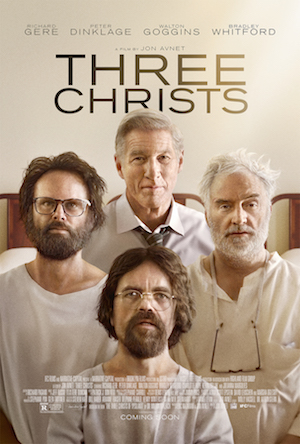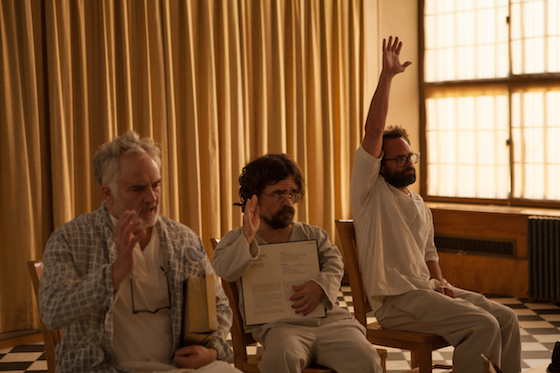

[Rating: Minor Rock Fist Down]
In the 1950’s typical treatments in mental institutions were…
Prefrontal lobotomy
Insulin induced coma
Electroshock therapy
Antipsychotic drugs
and minimal psychotherapy.
It’s always easy to look at past societal malpractices with modern eyes. What were common practices and habits could be looked upon as controversial today (think doctors recommending women smoke during pregnancy).
Three Christs, set in 1959, follows the true story of a psychiatrist (Richard Gere) and his work at Michigan’s Ypsilanti State Hospital. He explored experimental psychotherapy, bringing together three schizophrenic men who each thought they were Jesus Christ to confront and support each other. At the time, this controversial practice may have seemed highly controversial in comparison to today. Similarly, the film tries to experiment with blending the drama and dark comedy genre together to artistically portray a “based on a true story” movie, using a high caliber cast.
There’s always a great potential for a film when you gather a great cast of actors. I was pleasantly surprised when I saw the lineup for this one. The titular Three Christs (Peter Dinklage, Walton Goggins, and Bradley Whitford) move through their scenes with the ease you would expect from these established actors. At times, their performances outmatch the movie’s script which is generally underwhelming. Dinklage, in particular, has some great scenes that tap into a patient suffering with delusions of grandeur in a dramatic and touching way.

All three challenge Gere’s Dr. Stone character as they walk the line between faith and science, with Stone trying to play God himself with their treatment. Other great performances include Julianna Margulies, Kevin Pollak, Stephen Root, and Charlotte Hope (Myranda in Game of Thrones). It’s hard to be underwhelming with a lineup like this. I can only point to the writing because the acting is actually engaging.
Based on the book The Three Christs of Ypsilanti, there was so much potential for a great film here. Instead, we get a dull and sometimes pretentious outcome that has an all-star cast, a great premise, and not much else. Looking back on this film, I can see why it took over two years to find distribution… to believe in the experiment. In this case, it did not work.
Sometimes the cure for the future can be found in the mistakes of the past.






Comments on this entry are closed.